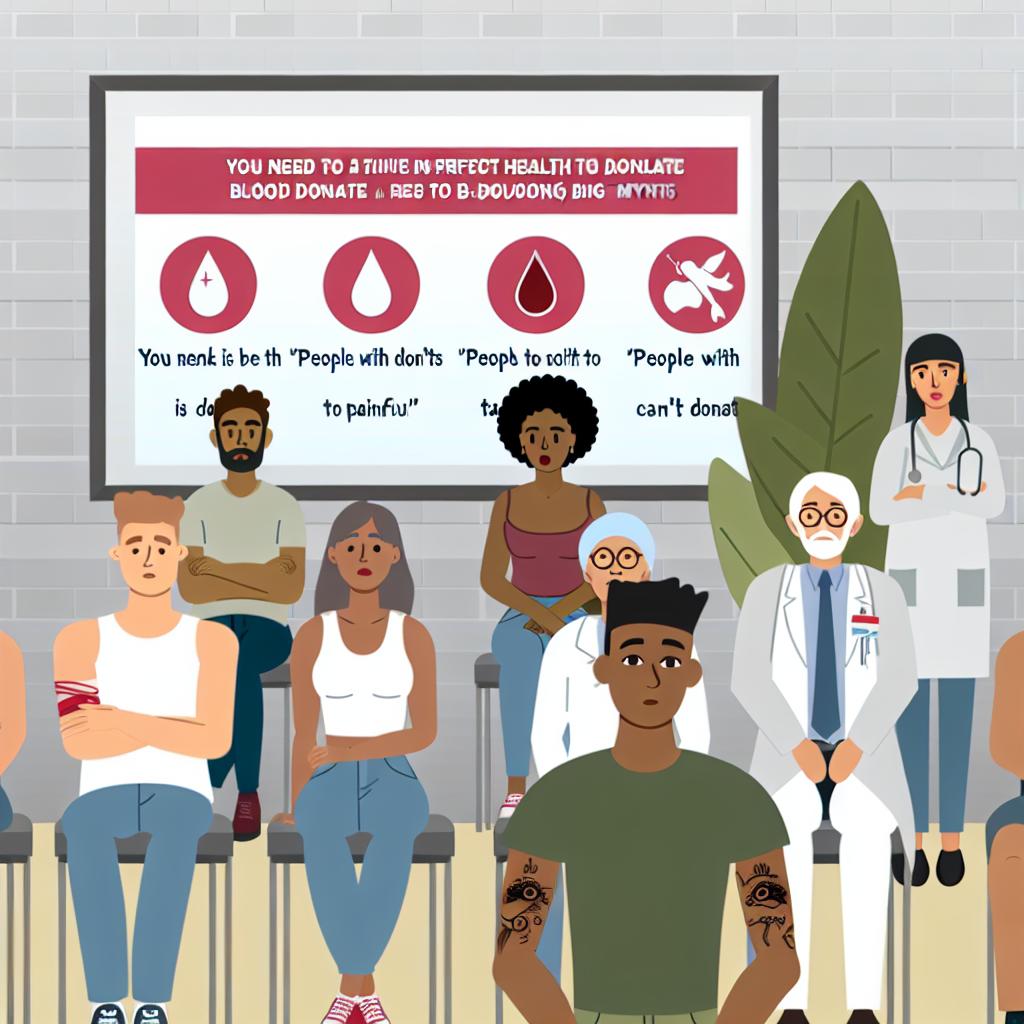Understanding Blood Donation Myths
Blood donation is often accompanied by various myths and misunderstandings that can deter potential donors. By dispelling these myths, we aim to encourage more people to participate in blood donation, a vital activity that saves countless lives each day.
Myth 1: Blood Donation is Painful
A common misconception is that donating blood is a painful process. In reality, most donors experience only a slight pinch when the needle is inserted. The level of discomfort is subjective and varies from person to person, but for most, it is entirely manageable. The entire procedure is performed by trained professionals who prioritize donor comfort. They utilize techniques that minimize discomfort and continuously monitor donors during the process. Additionally, any slight discomfort is often offset by the knowledge that this small, temporary inconvenience is providing an invaluable service to those in need of blood. For more details on the donation process, visit the American Red Cross website.
Myth 2: Donating Blood Takes Too Much Time
Many people believe that blood donation is a time-consuming activity. In truth, the process typically takes about an hour from arrival to completion. This timeframe includes several important steps that ensure both the safety of the donor and the quality of the blood collected. Upon arrival, donors complete a registration process where their identity and eligibility are confirmed. Next, a brief health screening ensures that the donor is fit to donate, protecting both their health and the health of potential blood recipients. The actual donation, which lasts about 10 minutes, is followed by a short period during which donors are encouraged to rest and enjoy some refreshments. This time serves both as a precautionary measure to prevent any immediate adverse effects and a token of appreciation for their contribution. The entire process is streamlined to respect donors’ time while maintaining rigorous safety and quality standards.
Myth 3: Frequent Donations Lead to Health Problems
Some individuals are concerned that regular blood donation could lead to health issues. However, the body is quick to replenish the blood lost during donation. Red blood cells are replaced within four to six weeks, and plasma is replenished within 48 hours. According to health guidelines, men can donate every 56 days and women every 84 days, ensuring safe recovery periods between donations. These guidelines have been established through rigorous research and are observed internationally to maintain donor health and well-being. Furthermore, many regular donors report positive feelings and a sense of community contribution without any adverse health effects. For expanded information on how blood donation affects health, refer to the resources provided by Mayo Clinic.
Myth 4: Only Universal Donors are Needed
While O negative blood is known as the universal donor type and is crucial in emergencies, all blood types are needed for a well-stocked blood supply. This is because blood transfusions must match the recipient’s blood type as closely as possible to prevent severe reactions. Different medical situations, such as trauma, surgeries, cancer treatments, and chronic illness management, require different blood types. Therefore, every donation is valuable regardless of the donor’s blood type. The diversity of blood types in the donor pool creates a robust and responsive supply that can meet various medical needs. To understand more about blood types and their importance, see resources at Canadian Blood Services.
Myth 5: Certain Diseases Prevent You From Donating
It is a misconception that individuals with chronic conditions or previous illnesses can never donate blood. While certain diseases may temporarily or permanently prevent donation, advances in medical understanding have made it clear that many people with well-managed chronic conditions, such as hypertension or diabetes, can donate blood. The eligibility to donate is determined through a combination of medical screenings and professional guidelines, which seek to protect donors’ health and ensure the safety of the blood supply. Those with specific health concerns are encouraged to consult with medical professionals and review guidelines provided by organizations such as NHS Blood and Transplant, which offer detailed insights into eligibility criteria.
By effectively debunking these common myths, we hope to alleviate fears and encourage a greater number of people to participate in blood donation. Blood is a resource only humans can provide, and each donation makes a significant difference. The need for blood is constant, and a single donation can potentially save multiple lives by providing essential transfusions to patients in critical need. Therefore, understanding and overcoming the myths surrounding blood donation is a crucial step in enhancing participation and ensuring that this life-saving practice continues to support our communities effectively.
